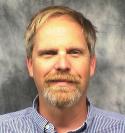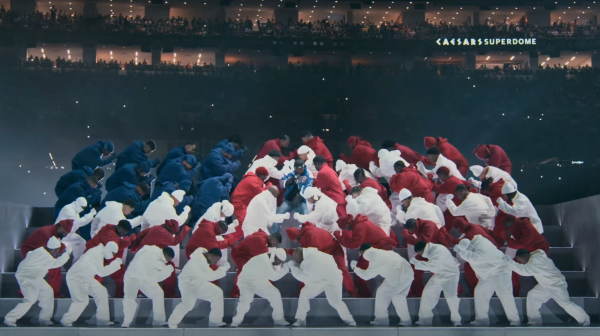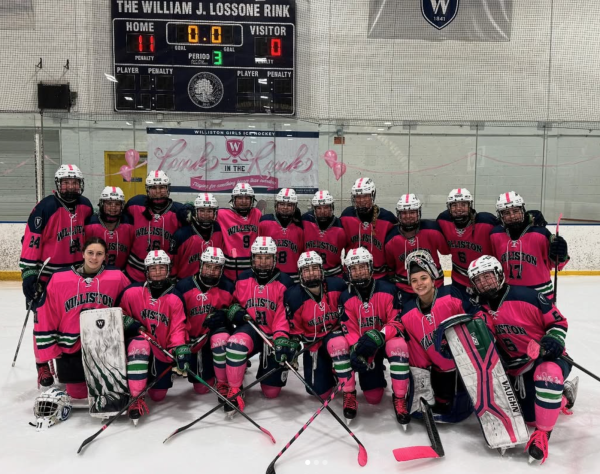Williston’s Science Department Makes the Switch
The New Standard Ninth Grade Class is Physics
“It should be possible to explain the laws of physics to a barmaid.”-Albert Einstein
This year, Williston’s Science Department switched the standard ninth grade curriculum from Biology to Conceptual Physics.
Science Department Head Bill Berghoff says, “One big goal for us was to try to take away the ‘I can’t do science mentality.’ We wanted to build a course that if you paid attention, did your job, and put a little effort in, you were going to do well…we’ve really tried very carefully to make the course ninth and tenth grade friendly.”
To tailor the class to ninth and tenth graders (who took Biology last year), most of whom have not taken pre-calculus, the class puts a priority on learning the concepts of physics, though class work still definitely includes solving problems with numbers. “I think it’s easy to plug numbers into an equation and get an answer. It’s harder to be able to explain why it works that way,” says Berghoff.
One of the biggest reasons why the department made the switch is because physics will better prepare students for their next science class, Chemistry.
Berghoff says, “We felt like the way we wanted to teach our classes didn’t match with the sequence we were teaching them in. We felt that teaching physics to the ninth graders was doable and then when kids went to take chemistry they would have this knowledge base that would make their chemistry go a little easier.”
Berghoff adds, “A lot of the skills that we thought were important in all the science courses we could address better in physics than they were being addressed in biology.”
Last winter, Berghoff and his department decided it was time for change. They proposed the new class to Williston and began planning the course last spring. Berghoff and all teachers who would be teaching physics the next year decided which topics to cover and how. This year, five teachers teach a combined twelve sections of the course They also decided which experi
ments they would use to best help students understand the material. Although Conceptual Physics is now a class, these teachers meet weekly to discuss what went well and what they would have liked to have done differently.
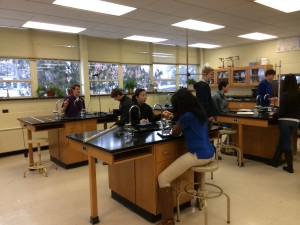
As science teacher Michelle Lawson, who teaches two sections of ninth and tenth grade physics, says, “I think it’s been very successful so far. Classes are always changing, and we will continue to assess and reassess what we teach and how we teach it. If something works this year, we can keep doing it. If something doesn’t work, we can try a different approach next year.”
Berghoff says that when he was designing the class last school year, he looked at the physics programs of other prep schools. He says that about 50 percent of the schools he visited offered physics as the standard ninth grade class. However, Berghoff said that he observedthat these schools’ physics classes were not in a format that was really suitable for ninth graders.
So far this year, Berghoff tells me that the new endeavor has gone better than he expected. However, the biggest challenge he and the other teachers face is “adjusting to logistics.” This means that with 164 students taking the class there is often not enough space to complete some experiments when each class period is just sixty minutes. Right now, there is only one classroom that has all the tools and mechanisms ready to do experiments. This is a problem when there are three sections of the same course being taught during the same class period.
When will this problem be solved? When Williston builds a new science building! In the past year, the school has announced its goal of constructing a new science building in the near future. Berghoff says that the biggest issue for building is funding. “I’ve got my shovel, I’m ready to dig,” he says.
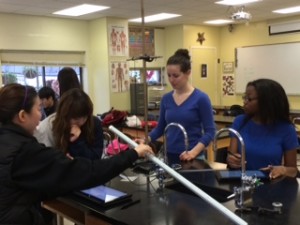
Berghoff says he plans to have nine new labs for experiments in the new building. This would be enough space for physics classes to have flexibility with when and where they do activities.
Funding is necessary for construction, but the building will only become a reality when it is clear that more space is needed. Berghoff hopes this new physics class will make Williston students more enthusiastic about adding science classes to their schedules.
“We’re going to have so many kids, hopefully, that really want to take more science classes that the message will be clear that more space will be useful.”
Rachel Rockwell, a tenth grader who took Biology last year and currently takes Physics, says she is enjoying the class but would like to see teachers make their classes unique.
“I like that everyone is taking it and the labs are pretty fun. I think the teachers are doing a great job getting concepts across. I think maybe since everyone is taking physics, teachers should make their lessons fun and different than another teacher who is teaching the same lesson,” says Rockwell.
Berghoff says, “We were finding that a good number of kids could graduate from Williston without ever having any physics. What I think [students] are going to find this year is that so much of physics is so applicable to everything you’re doing in life that it was kind of criminal that we weren’t exposing more kids to it.”



